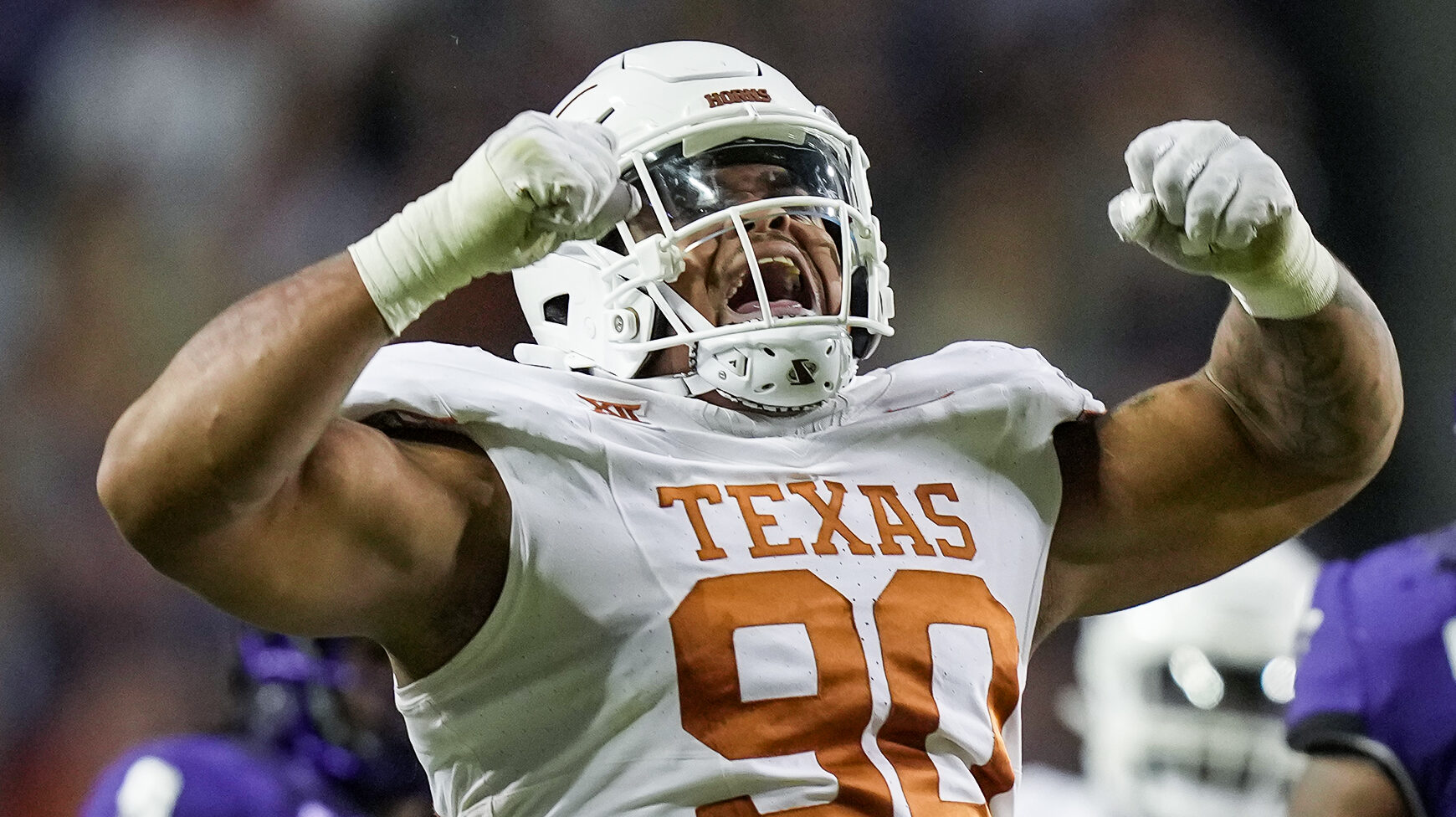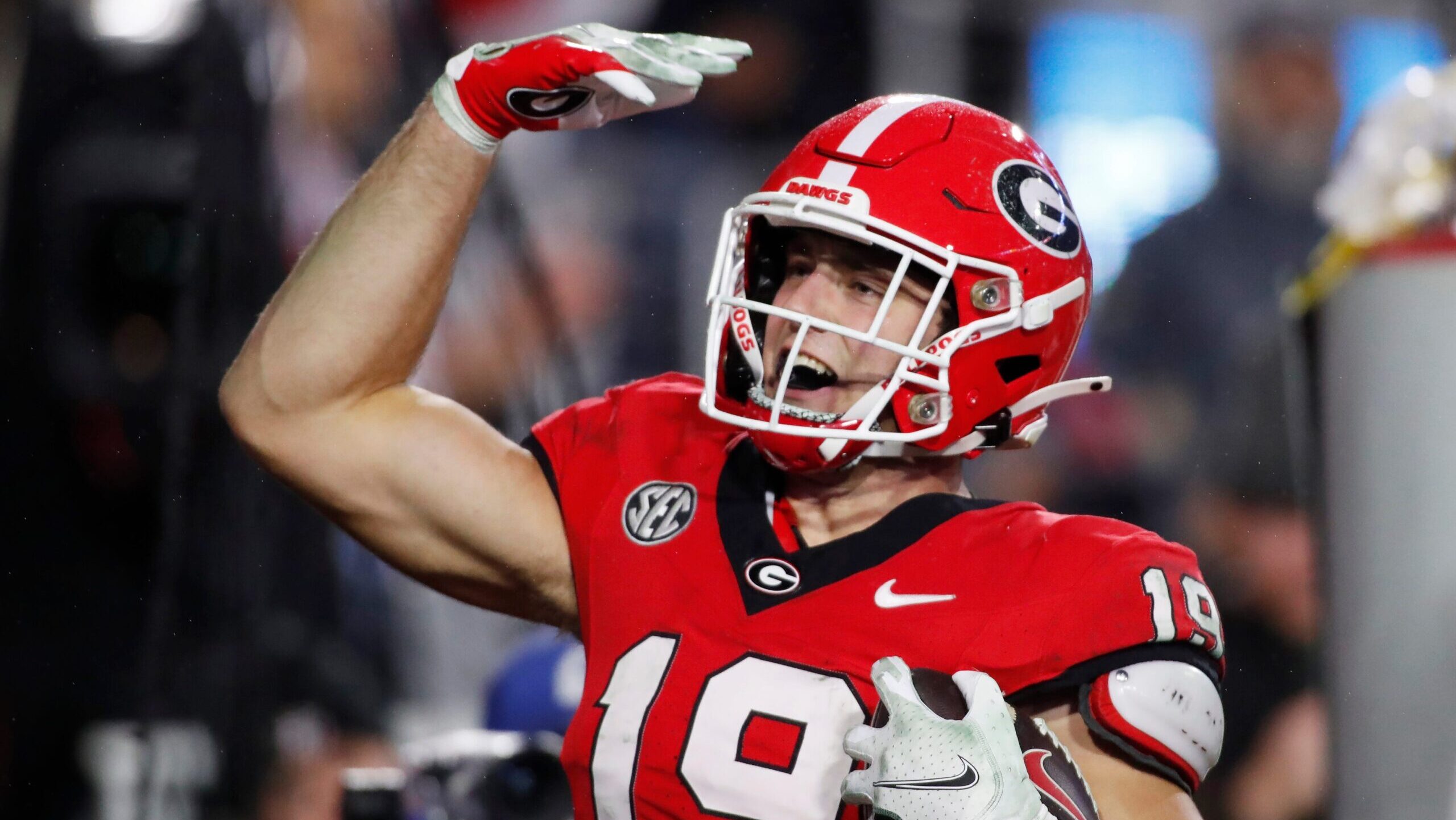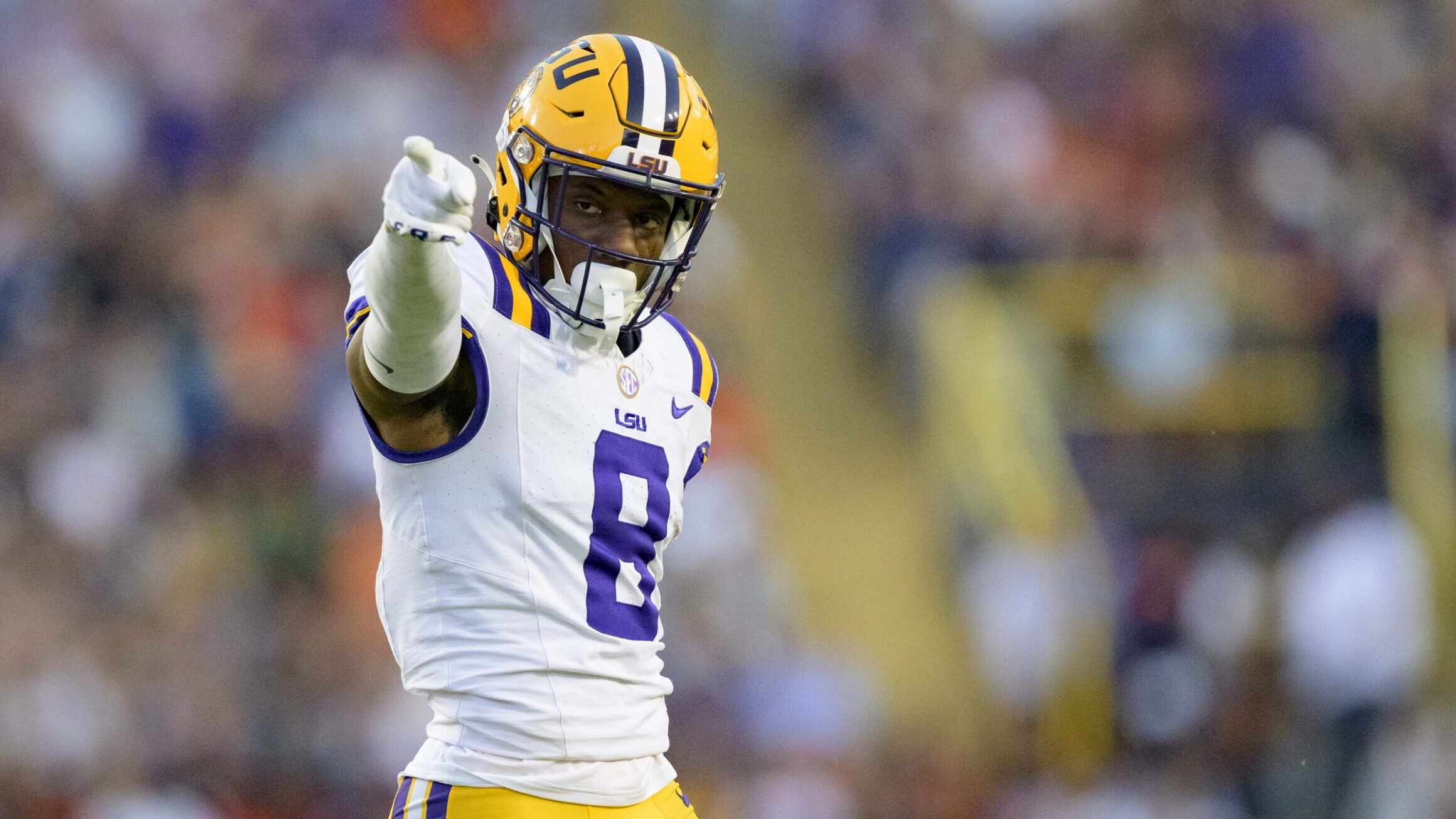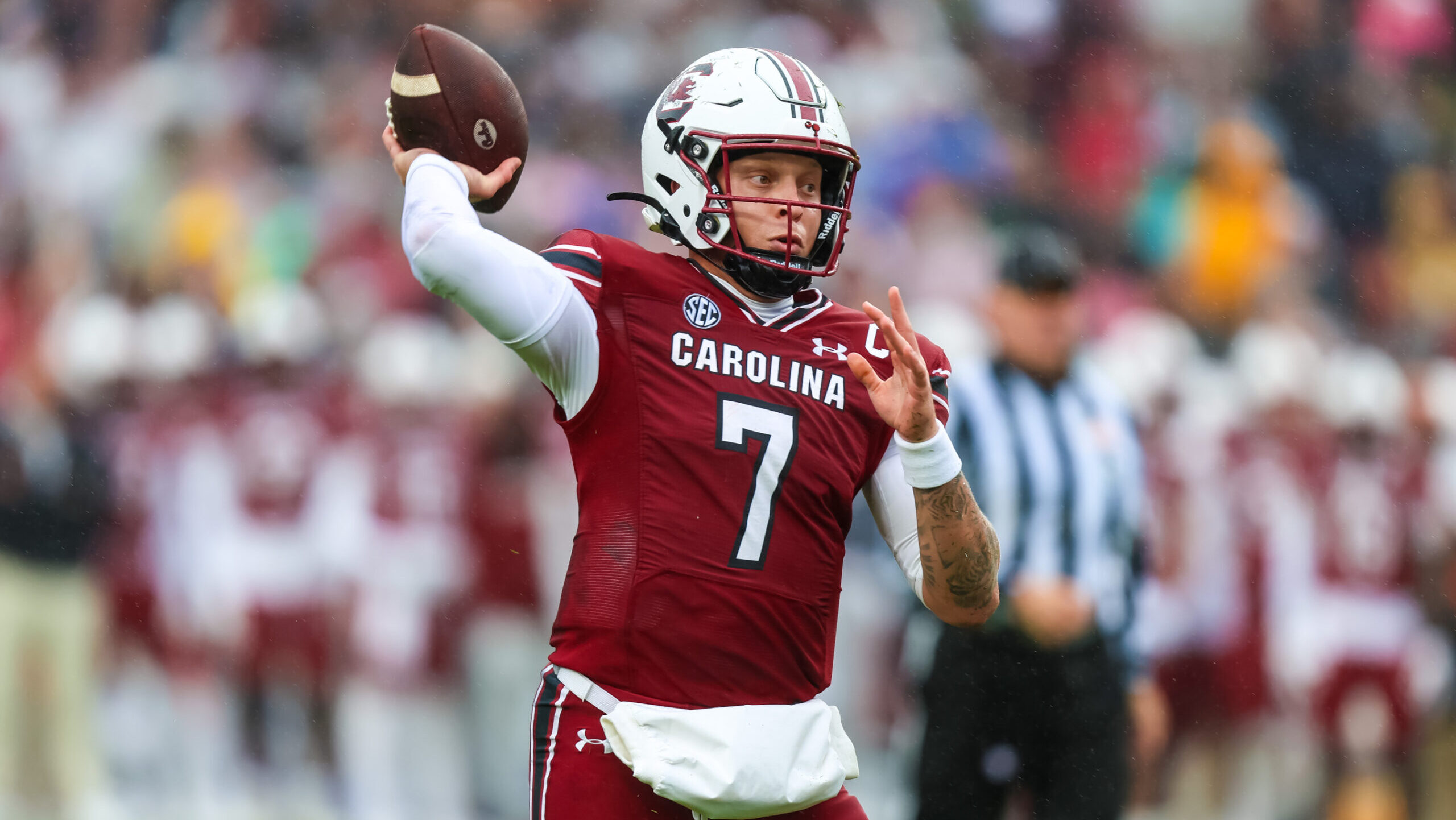Analysis
3/4/23
8 min read
2023 NFL Combine: Previewing RB, OL Workouts
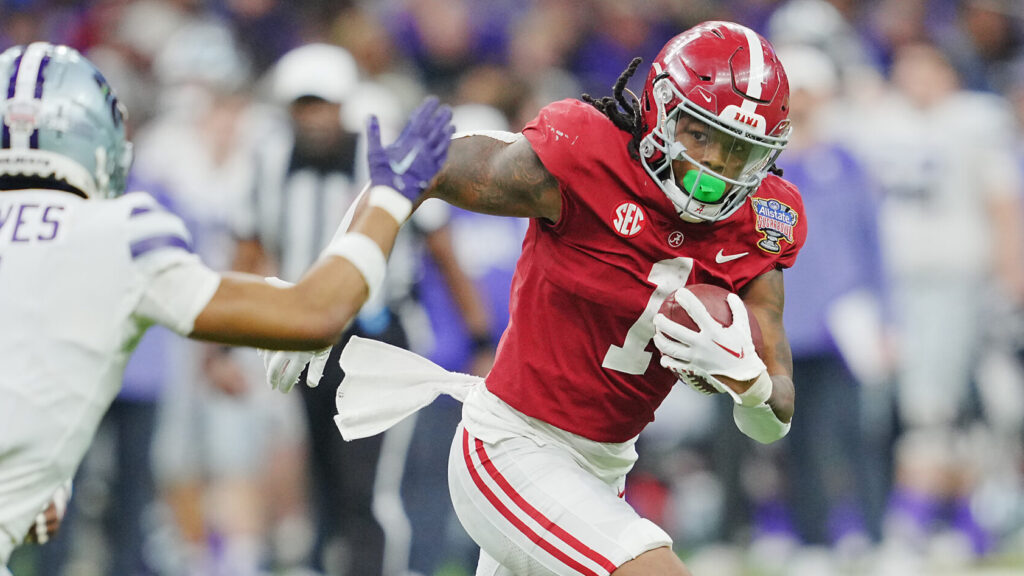
To preview the 2023 NFL Scouting Combine, The 33rd Team's experts are going position by position breaking down what NFL teams look for when evaluating prospects in Indianapolis.
The running backs and offensive linemen wrap up the NFL Combine's on-field workouts on Sunday. There are 27 running backs and 51 offensive linemen scheduled to participate this year.
With so many prospects competing at the same time, it can be difficult to know what to look for, which is why The 33rd Team is highlighting the drills that matter and how NFL teams use them to evaluate prospects.
What You Need to Know
RB, OL Workouts
- When: Sunday, March 5
- Time: 1-6 p.m. ET
- How to Watch: NFL Network, NFL+
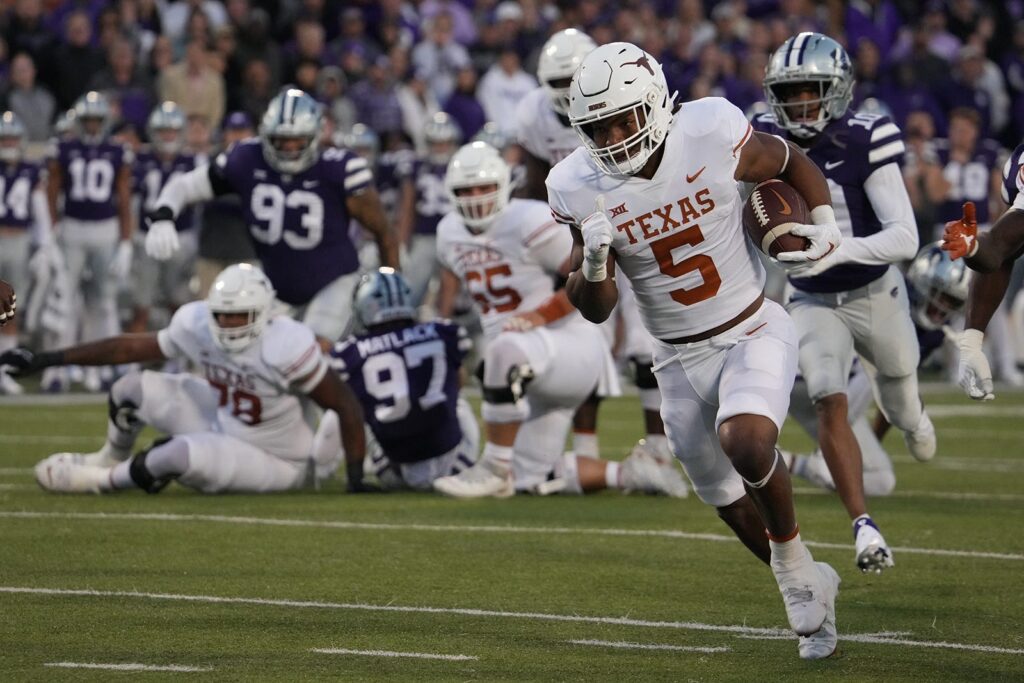
The 33rd Team's Top 5 Running Backs
| Player | Overall Rank | Grade |
| Bijan Robinson | No. 6 | 6.99 |
| Jahmyr Gibbs | No. 17 | 6.77 |
| Devon Achane | No. 99 | 6.10 |
| Zach Charbonnet | No. 107 | 6.10 |
| Zach Evans | No. 110 | 6.07 |
Critical Drill No. 1: Inside Routes
"There are a couple of running backs in this draft class, such as DeWayne McBride from UAB (scouting report), who had very few catches and targets this past season. I know he's a very talented runner, a big back (5-foot-11, 215 pounds) with excellent vision, but he didn't have to catch the ball. So the drill for the running backs that's critical to see if they weren't used a lot in the passing game is to evaluate them as route runners, to evaluate if they catch the ball away from their body. Do they have soft hands? Running backs are going to have to be a part of the passing game, especially in today's NFL. Some of these guys that come out may not have had the same amount of targets as some other running backs. So that's the one thing you want to see." — Rick Spielman
"I want to see easy hands and fluid routes. I don't want to see a guy that looks like he's counting the steps in the route. He's not confident going out and catching the football. That's something you're talking about. I remember when Billy Sims was at Oklahoma, he didn't catch any passes because they didn't throw any passes. But the ball was always in the air on pitches. In his rookie year, he caught 50 balls and people were in shock. He said the ball was always in the air (at Oklahoma). It was just a different type of throw. At Oklahoma, it was a pitch not, a pass." — Charles Davis
Critical Drill No. 2: Duce Staley Drill
"I always love the running backs that try to hit it up through the hole and have to make a quick cut. Read off the coach who is holding the bag and make sure you go the opposite way of what he’s showing you. There are a lot of things there that you look for, and a lot of times you're just trying to verify what you've seen on tape. There is a guy, a one-cut runner who's just got straight-line speed up the field. Usually, that's going to show up in these drills. Other guys maybe run with a little bit more body control or have the ability to drop their hips or make jump-type cuts. I call them water-bug movement, where they can stop and start and go from 0 to 60." — Rick Spielman
Offensive linemen
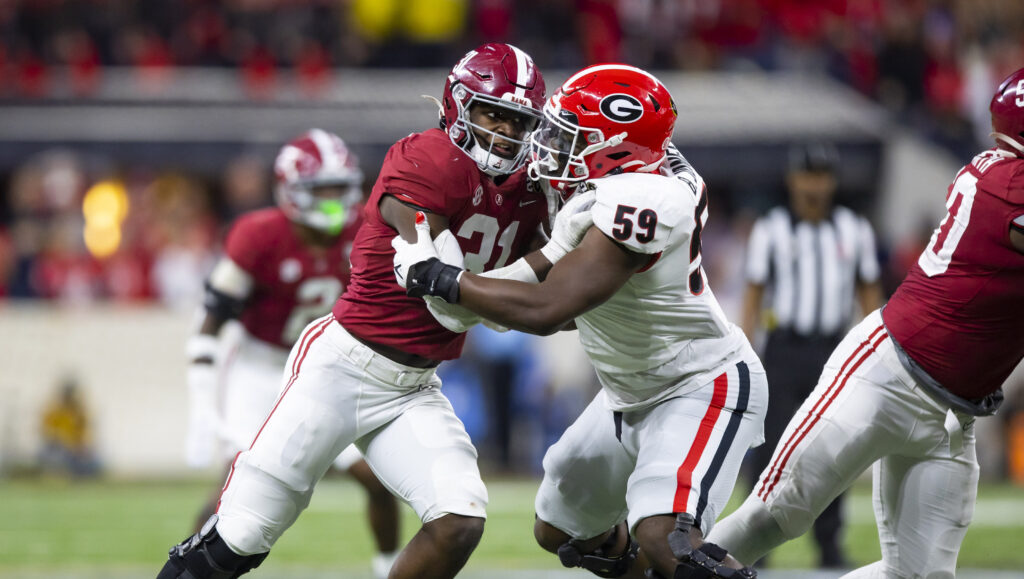
The 33rd Team's Top 5 Tackles
| Player | Overall Rank | Grade |
| Broderick Jones | No. 2 | 7.08 |
| Paris Johnson | No. 12 | 6.89 |
| Dawand Jones | No. 27 | 6.71 |
| Peter Skoronski | No. 31 | 6.70 |
| Anton Harrison | No. 37 | 6.39 |
The 33rd Team's Top 5 Interior O-Linemen
| Player | Overall Rank | Grade |
| Olusegun Oluwatimi | No. 55 | 6.29 |
| O'Cyrus Torrence | No. 70 | 6.20 |
| Nick Broeker | No. 87 | 6.13 |
| John Michael Schmitz | No. 92 | 6.12 |
| Luke Wypler | No. 98 | 6.10 |
Movement Matters Most
"It's hard to judge offensive linemen in shorts. That's why I always love the Senior Bowl because that's the last vision you're going to have of those offensive linemen actually doing football drills where they have to block somebody and display a lot of the movement skills that offensive linemen have to do. Really, you're just trying to see their movement skills. Some guys maybe will play guard, they'll work in at center some so you can see if they can play multiple positions. But it's really hard to get more out of it. Let's say you have an offensive lineman that is big and thick, but he's more of a gap scheme guy, he's not going to look as good on poles or a lot of these outside-zone drills at the combine. But if you want him to smash someone in front of him, move at the point and he's going forward in the gap schemes, that's where he's going to shine. That's going to shine when he's in pads. That's not going to shine as much when he's running around in his shorts." — Rick Spielman
"It takes a refined eye when you're watching these guys go through these drills because these are not drills that you do as an offensive lineman. They're not really drills that if you look good doing them, it necessarily translates to you being a good offensive lineman, or if you look bad doing them or if you fail at them, it's not going to correlate to your ability to play on the offensive line. That's why there's a benefit to having these guys do these jobs because you can see how they bend their ankles. How do they create force from the ground? How do they move laterally? Does their weight shift how it's supposed to as they're changing direction in the mirror, dodge drill? How do they recover when they get themselves out of the framework of their body? For an offensive line guy like myself and Sean O'Hara, who's going to be working with me this weekend, it is really advantageous to watch these guys because you learn a lot about how they move and potentially their ability to be coached at the next level with the techniques that they're going to see. When they get into uncompromising positions, how quickly are they going to be able to recover and have that firmness that they need to have, especially when you're pass protecting?" — Joe Thomas
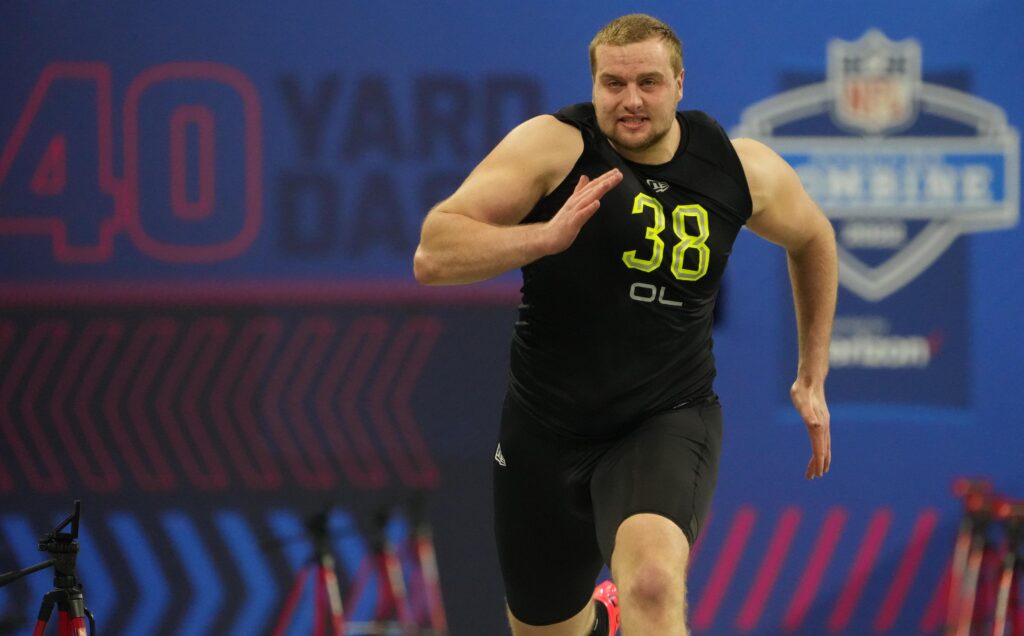
Crunch Time: 10-yard Split Is Key for Linemen
"Now if you have some of these 300-, 310-, 315-pound offensive linemen flying down there and break in 5 seconds flat, that's a pretty good indication of the type of athlete that you're evaluating and type of athlete that you're going to get. But that first 10 yards for both the offensive and defensive linemen were the most important because, really, are those guys going to have to run 40 yards?" — Rick Spielman
"The first drill that sticks out to me is the 10-yard split, which you don't do individually. You run your 40, but they're going to time you in the 10-yard split. That's an indicator of just how quickly can this guy get up to speed. That's something when you look at all the best defensive linemen, the specific number might be 1.6 or 1.7 seconds, but pretty much everyone's under that number now. That's literally their job — those first two steps off the ball. That's a direct correlation. In the general sense, it's that suddenness, that quickness, that how quick and how able are you to get up to top speed. That goes for every position because you're going to be out of position at some point on the field in a given play. Maybe not every single play. But we're going to need to change direction, we're going to need to accelerate. The 10-yard split is the best measure of that." — Mitchell Schwartz
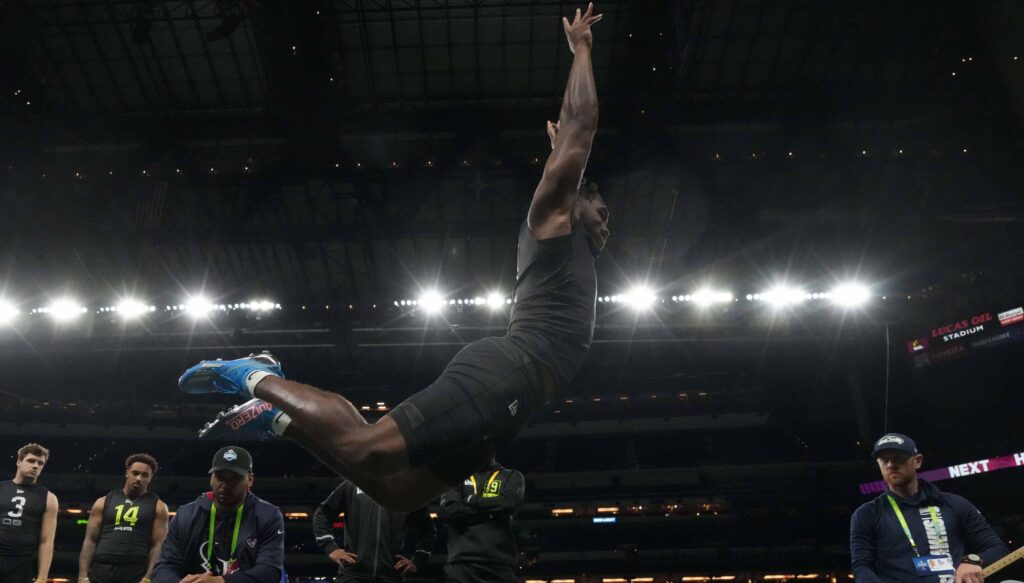
Darkhorse Drill: Broad Jump
"It's funny that I say this, but the broad jump is an excellent indicator of pure explosiveness and athleticism. There's a strong correlation between the best athletes in the world and how far they could jump, because you're creating all that force from a standstill. It is a little bit technique-based because it's not like you're super training for it. But there is an inherent ability to understand how to create force and leverage from the ground." — Mitchell Schwartz
"I think those jump tests are really important, and that 10-yard split, to give you an indicator of just how explosive this player is. That doesn't mean that you can't be a great offensive lineman if you're not good at those and vice versa. It doesn't mean you're going to be a great offensive lineman just because you're good at those things. But it gives you some level of knowledge as to how explosive this player is going to be and maybe where they're at ceiling-wise." — Joe Thomas
Cover Your Ears, It's the Punch Drill
"Usually you can hear that echo up through the stadium when they punch those bags. And you can tell that they have what we call "heavy hands." They have a little bit of a thud to them when they punch. I always thought the bigger the hands on the offensive linemen, the stronger the hands were, and the stronger the punch was. When they back up and they're doing a pass-pro drill where they're shifting to the right, shifting to the left, backpedaling, and those dummies are coming at them. You can really hear that pop." — Rick Spielman

